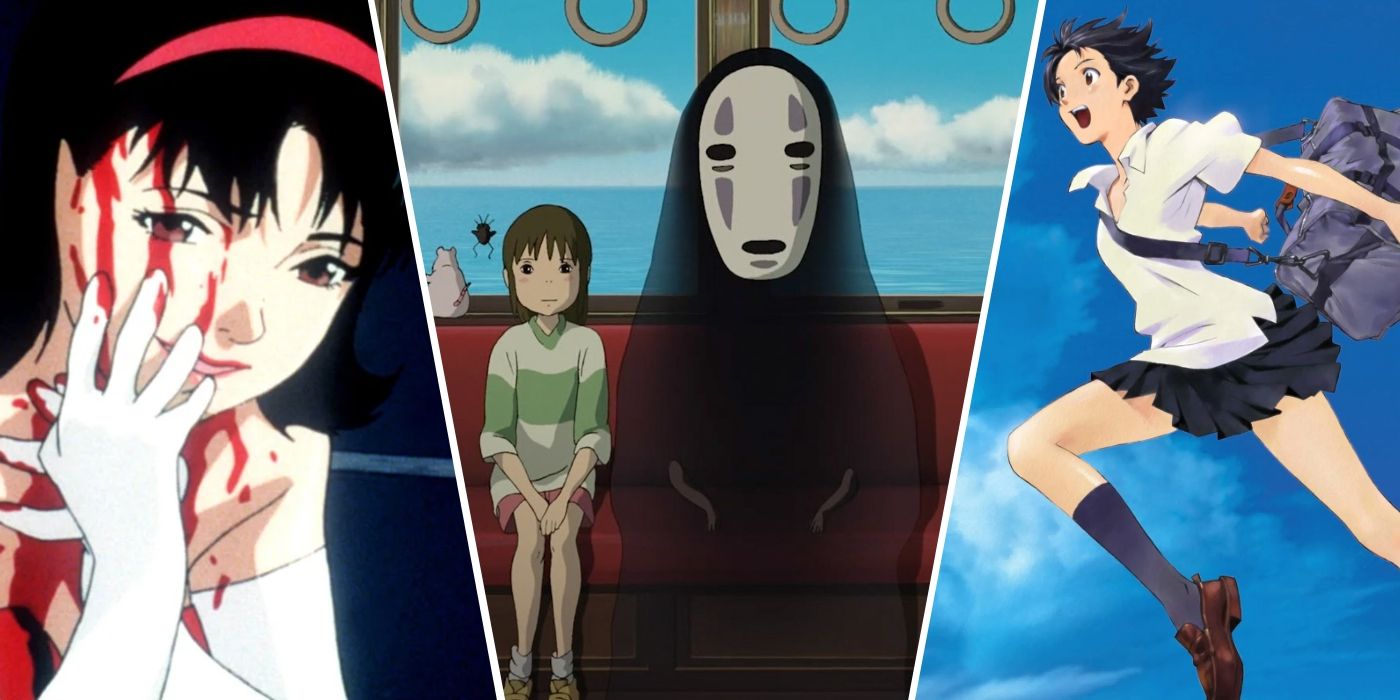Roger Ebert hated that American moviegoers didn’t appreciate anime as much as people in other parts of the world. He once wrote an article emphasizing the importance of the genre. Ebert admitted that, by no fault of their own, American audiences have been wired to expect “a Disney movie, or something that looks like Disney.” The famous critic reminded everyone that it’s important to look far and wide since “animation is not an art form limited to cute little animals and dancing teacups.”
Indeed, anime tends to be more diverse, combining different production styles and covering a wider variety of topics. And the demand keeps growing. Today, there are approximately 430 animation production companies in Japan. Interestingly, Ebert was stricter while assessing anime. Or maybe he just didn’t watch as many anime movies as he should have (perhaps due to a tight schedule).
The Chicago Sun-Times columnist only ever approved 5 movies in anime the genre during his lifetime, but they are true gems capable of impressing even the most casual viewer.
5
‘My Neighbor Totoro’ (1988)
Ebert’s score: 4/4
My Neighbor Totoro is about the sisters Satsuki (Noriko Hidaka) and Mei (Chika Sakamoto), who move to the Japanese countryside with their dad to be closer to their ailing mother. When Mei wanders into the forest, she encounters friendly spirits, including the large, kind Totoro. Satsuki later meets Totoro, too. Though the children are initially bewildered by what they find, they soon become blissful as they embark with Totoro on a series of fantastic escapades.
So iconic are the two characters that they have made numerous appearances in other popular anime movies. Totoro also serves as the mascot for Studio Ghibli.
Life’s Simple Joys
Roger Ebert acknowledged how distinctive the movie was, appreciating the fact that it is “based on experience, situation and exploration—not on conflict and threat.” He added “It is a little sad, a little scary, a little surprising and a little informative, just like life itself. It depends on a situation instead of a plot, and suggests that the wonder of life and the resources of imagination supply all the adventure you need.”
Indeed, director Hayao Miyazaki does well by mining plenty of material out of simple situations rather than a major quagmire. Beyond that, the anime’s detailed exploration of animism, environmentalism, and Shinto symbology encourages audiences to look at life differently, while the dialogue makes them love the characters even more. It’s not surprising that this gem won the Kinema Junpo Award for Best Film in 1988.
4
‘Princess Mononoke’ (1997)
Ebert’s score: 4/4
In Princess Mononoke, Ashitaka (Yōji Matsuda), a young warrior, journeys to the forest to seek a cure for his arm, which was cursed by a demon while he was protecting his village. He finds himself in the middle of a conflict involving the industrialized Iron Town, led by Lady Eboshi (Yūko Tanaka), and the compassionate forest spirits and gods who plan to defend their land at all costs. Among the forest defenders is San (Yuriko Ishida), a human girl raised by wolves and now known as Princess Mononoke.
Director Hayao Miyazaki came up with the idea as early as 1980 after releasing his debut film, The Castle of Cagliostro. The story was partially based on the “Beauty and the Beast” fairy tale by French novelist Gabrielle-Suzanne Barbot de Villeneuve.
Protecting Nature
The film delivers an intimate, seemingly accurate portrayal of industrial-environmental conflict. It is limited by creature hijinks but overflowing in camaraderie. You can practically smell the forest air. The fusion of fantastical elements with the jidaigeki style makes the entire production bulkier and better, while the portrayal of the characters in a feminist light adds to the already-present advocacy tone. In all, a flavorful, inspirational adventure, ideal for family viewing.
Roger Ebert recommended the movie for an Oscar nomination, but it never got one. He praised everything about it, noting that Princess Mononoke is not a “simplistic tale of good and evil, but the story of how humans, forest animals, and nature gods all fight for their share of the new emerging order.”
3
‘Only Yesterday’ (1991)
Ebert’s score: 4/4
Only Yesterday
- Release Date
-
July 20, 1991
- Runtime
-
119 minutes
- Director
-
Isao Takahata
- Writers
-
Isao Takahata
-

Miki Imai
Taeko Okajima (voice)
-

Toshiro Yanagiba
Toshio (voice)
-

-

Mayumi Izuka
Tsuneko Tani (voice)
Only Yesterday is about Taeko (Miki Imai), a 27-year-old Tokyo office worker who takes a brief break from city life to relax in the countryside. There, she helps with the safflower harvest while reflecting on her eventful childhood in 1960s Japan. The story bounces between the present and the past as she recalls school years, family drama, and adolescent schemes. Audiences also learn how her younger self has influenced her adult choices. And, as she connects with a farmer, Taeko starts to question her life choices.
The anime is based on a manga of the same name, written by Hotaru Okamoto. However, most moments are exclusive, with only the scenes set in 1966 with the 10-year-old Taeko coming from the source material.
Challenges That Come with Age
Director Isao Takahata has made weightier animes with more artistic flair, but this remains an essential, moving work in his canon. With meticulous image designs, perfect sound, and attention to detail, the movie delivers a vivid sketch of quotidian life in both rural and urban Japan. The mundane chores and the character setbacks painstakingly shown on screen all accentuate the burdens of daily life and the drudgery of unexpected occurrences. Ahead of its era in its layered themes, the story is also a morality play with restrained comicality.
Ebert praised Only Yesterday for being “a touching, melancholy meditation on the life of the same woman.” He also loved how “Takahata uses stillness, silence and a long pause in an early sequence where the little girl sees a boy she likes and realizes he likes her, too.”

Related
10 Anime Movie Masterpieces Not Based on a Manga
While most anime comes from manga pages, these movies drew inspiration from other sources.
2
‘Kiki’s Delivery Service’ (1989)
Ebert’s score: Two thumbs up
Based on Eiko Kadono’s 1985 novel of the same name, Kiki’s Delivery Service follows 13-year-old Kiki (Minami Takayama), a young witch beginning her mandatory year of solitary training. She starts a delivery service, using her flying broomstick as a means of transportation. While at it, she faces numerous challenges, including a lack of confidence. Thankfully, she makes new friends along the way who inspire her.
With a production budget of ¥800 million, this was one of the most expensive anime films up until then. Several details from the source material were also altered to make Kiki face more challenges.
At Your Doorstep
A flavorful, gentle, meticulous depiction of time and place is heightened by powerful voice performances, catchy tunes and sumptuous visuals in Kiki’s Delivery Service, particularly from Chika Sakamoto and Hiroko Maruyama. It won every major award it was nominated for, including three trophies at the 12th Anime Grand Prix.
The English dub was the first video release to be reviewed on Siskel and Ebert as a normal film rather than on the show’s “Video Pick of the Week” section. Both critics gave it “two thumbs up.” Ebert later ranked it among his list of the 10 best films of the year.
1
‘Grave of the Fireflies’ (1988)
Ebert’s score: 4/4
Set during World War II, Grave of the Fireflies covers the woes of two sisters, Seita (Tsutomu Tatsumi) and Setsuko (Ayano Shiraishi), as they struggle to survive following the bombing of their home. Their father, an Imperial Japanese Navy captain, is away on duty, while their mother happens to have been killed during the attack by American forces. They thus wander through the land, facing mistreatment from relatives and strangers, as well as starvation.
War is No Picnic
Grave of Fireflies is aggressive in its exploration of the loss of innocence, the brutality of fate, the damage done by war, and the unbreakable bond between family members. In live-action form, this kind of film could have easily nabbed several Oscars. It is a first-rate character study animated by the best in the business. The story moves and crackles, but it’s the tangible chemistry between sisters that holds audiences fast.
Ebert agreed that this ought to be considered a proper war movie. He wrote: “Yes, it’s a cartoon, and the kids have eyes like saucers, but it belongs on any list of the greatest war films ever made.” He also described it as “the most realistic animated film I’ve ever seen–in feeling.”
Source link

















Add Comment